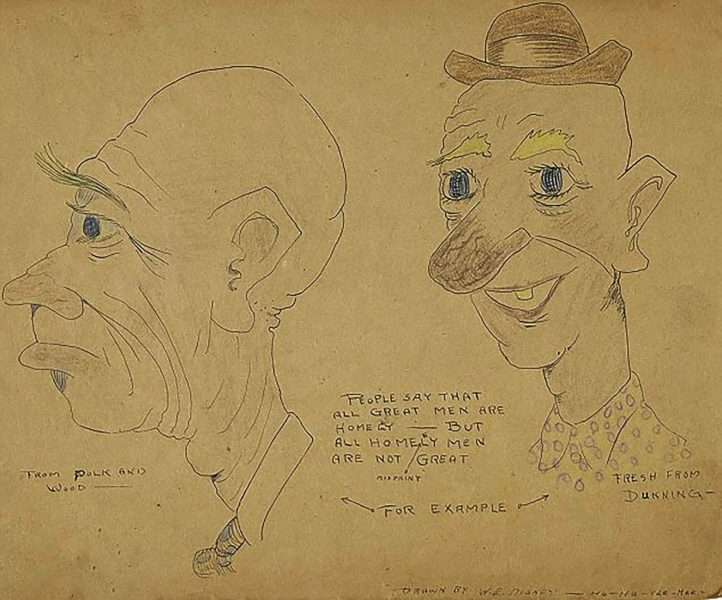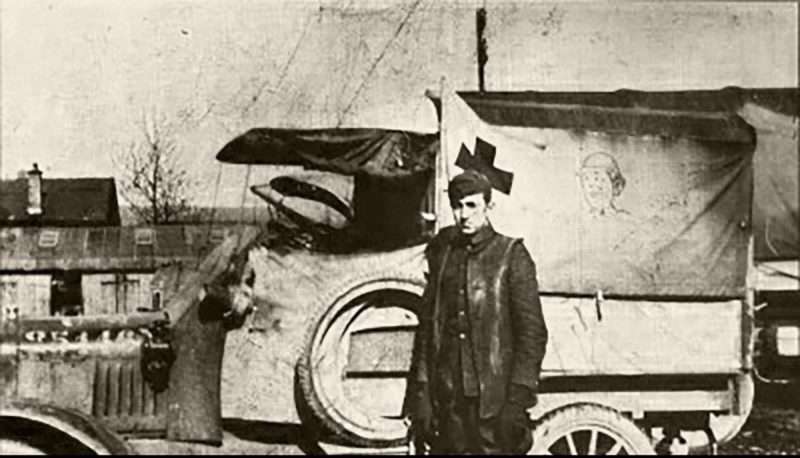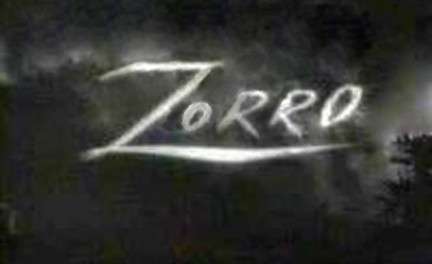Walt Disney, if anything was a man who wore countless hats during his lifetime. Storyteller, animator, visionary, husband, father and the like. He was a hard-working Midwesterner who gave 110% all the time and never gave up. But the one thing he was head and heels above all else, a staunch lover of his country and perchance one of the country’s greatest patriots. However, we rarely hear anything about Walt’s service in the armed forces. That is because although Walt witnessed our country’s two greatest conflicts, World War I and World War II, he was too young for the first and too old for the second. And this fact always stuck in Walt’s craw, for he wanted to be there for his country. During WWII, when many of his animators were joining up to fight, future CEO of the Disney Company Card Walker told Walt he was joining the Navy. Walt tried to dissuade him, finally said… “You’re a lucky guy. I’d like to go myself.”
WWI at first did not affect America at first. We hardly took notice of a conflict so far away. However, passions heated up and patriotism ballooned after the United States entered the conflict on April 6th, 1917 and declared war on Germany. Walt was included in this heightened atmosphere of “Joining up and fighting the Huns”. He always loved uniforms, himself in many as a postman, gateman, high school cadet and as a train “butcher” Two of Walt’s brothers were already in the service, Ray in the army, and Roy enlisted in the Navy on June 22nd, 1917. He was assigned to the Great Lakes Naval Training Station, just outside of Chicago. When Roy visited on leave, Walt met him at the train station. He said later on that Roy “looked swell in that sailor’s uniform.” Roy’s letters home was full of patriotism and military glory. This further fueled Walt’s determination to join up and serve. Walt recalled… “I just had to get in there.” But the enlistment age was 17 and Walt was only 16.
Now in the summer of 1918, defeating the Germans and Kaiser Wilhem II was foremost on the country’s mind, and Walt’s. Throughout the War, Walt drew patriotic cartoons for his high school newspaper. These illustrations demonstrated his passionate support for the war effort and included many suggestions like saving stamps or eating less so more food could be sent overseas to the troops. A cartoon of The Kaiser usually took the impact of Walt’s patriotic fervor as did people who haven’t joined up to fight, folks who Walt felt were “slackers”. Walt first attempted to join the Navy but was rejected because of his age. A friend of his who worked at the Post Office, Russel Maas discovered that the Canadian army accepted young volunteers, and both young men planned to sneak across the border and sign up. However, Russell’s mother discovered the plot, called Walt’s mother and the plan was stopped. Not to be so easily deterred, Russell hatched another scheme…The Red Cross Ambulance Corps were much more lenient on age requirements. Both boys applied as the “St. John” brothers, but still needed their parent’s signatures on the applications as well as passports.
 |
 |
 |
But their plan was discovered, and Walt affirmed his desire to serve, he pleaded, “I don’t want my grandchildren asking me, “Why weren’t you in the war?” “Were you a slacker?” Walt’s father Elias would have no part of it, saying…” I might be signing your death warrant”. Walt’s mother Flora had a different take on the subject… “Three of my sons have left this family in the middle of the night. Walter’s determined to go, Elias, even if he has to sneak out like his brothers. I’d rather sign this paper and know where he is.” Even so, Elias would not sign, saying… “Forge my name if you want, but I won’t sign!” And she did forge his name. And in keeping with the situation, one of Walt’s first artistic undertakings was altering his birth date on his passport, changing “1901” to “1900”. This historic document is now housed in the Disney Archives, and you can see the clear forgery if you look close. On September 16th, 1918, Walter Elias Disney enlisted as a member of the Ambulance Corps.
Walt was assigned to the Red Cross Ambulance Training Facility at Camp Scott, an old amusement park located on Chicago’s Southside. After his arrival, he considered the whole affair as an adventure, not war. Trained for two weeks to repair ambulances, motors, and disassemble and assemble trucks by the mechanics of the Yellow Cab company, they also were taught how to drive these vehicles over rough terrain. They then received two weeks of military drills. It was then the hand of fate intervened; this was during the deadly global influenza pandemic outbreak of 1918 and Walt became a victim. He moved back home to recuperate, his mother Flora nursed he and his sister back to health. After his recovery, Walt learned that his unit and Russell had been deployed to France. Walt was assigned to another base in South Beach Connecticut.
 |
 |
It was here Walt met the future founder of the McDonalds’ burger chain, Ray Kroc, who was only 15 years old at the time. Ray made this observation of Walter Disney. Diz was his nickname and he thought him a “Strange Duck”. “Whenever we went into town to chase girls, he stayed in camp, drawing pictures” Another blow fell on Walt’s desire to enter the conflict. On November 11th, 1918 the Armistice was signed at Compiegne France, which officially ended the “Great War”. Everyone in Walt’s group was depressed while the world celebrated because they missed out on something very big.
But despite the end of the war, the Red Cross was still in need of drivers. Walt Disney was awakened on November 18th at 3 am in the morning and was informed he was part of 50 men selected to ship to Le Havre France as part of Company A of the Automotive and Mechanical Section. So in a converted cattle ship, the SS Vaubin, Walt Disney arrived in France on December 4th, on the day before his 17th birthday. After their arrival, they were herded into a train for the town of St. Cyr, outside of Versailles, near Paris. The chateau was unheated, the nights were freezing and the food was revolting. Walt had to wrap himself in newspapers and blankets just to stay warm. Yet, despite the sordid conditions, his comrades succeeded in celebrating Walt’s birthday with a round of cognac for the older men, and grenadine for the younger fellows. His duties consisted of being a driver and a mechanic for the Red Cross supply trucks and provided taxi service for army officials. He was then moved to the Hotel Regina near the Louvre in Paris and then to Evacuation Hospital No. 5 on the Longchamps racecourse at Auteil.
It was here that Disney began to develop his artistic talents. He covered army vehicles with cartoons, drew war oriented pictures and cartoons for Life Magazine and Judge, a humorous publication, and illustrated posters for the Red Cross. Walt also served at a Red Cross canteen at Neufchateau commune. At Neufchateau, his duties involved driving Red Cross canteen worker Alice Howell to different base hospitals, handing out ice cream and doughnuts to war patients. Walt and Howell developed a lifelong friendship. Alice knew General Pershing well and it was her friendship with the general that allowed Walt to drive the general’s 10-year-old son to visit the birthplace of Joan of Arc and enjoy a picnic with him. Walt never forgot this kindness.
When Walt was not driving, he was drawing. He drew sketches for the canteen menu, designs on the canvas ambulance flaps, and caricatures for his friends to send to girlfriends and families. “I found out that the inside and outside of an ambulance is as good a place to draw as any,” Walt later recalled. He also sent funny and moving letters with sketches to The McKinley Voice, his high school newspaper. Walt and another driver teamed up and created a little sideline operation, selling souvenirs to soldiers heading home. They collected German helmets, and Walt, utilizing his artistic skills, converted them into rare German sniper helmets, making them look battle worn, banging them up, shooting bullet holes through them and even adding hair and dried blood. The boys made a lot of money in this operation.
Despite his service in the Ambulance Corps, many urban legends surfaced that surrounded Walt after his death, and one was that he was dishonorably discharged. But Walt was never in the military, so he couldn’t be discharged either honorably or dishonorably. It might have begun when someone claimed he hung his discharge from the Red Cross upside down behind his desk to show his displeasure of being in France. Another story was that Walt supposedly hung his dishonorable discharge on the wall of his office for everyone to see on his weekly television show. Walt’s office on the television broadcasts was just a set mocked up to imply his real office. Other parts of the “legend” say that an influential congressman offered to “fix” Walt’s discharge and turn it into an honorable one. This is also false. Contrary to the truth, Walt was proud and enthusiastic about his time in France. Walt later told his daughter Diane…: “The things I did during those eleven months I was overseas added up to a lifetime of experience. It was such a valuable experience that I feel that if we have to send our boys into the Army we should send them even younger than we do. I know being on my own at an early age has made me more self-reliant…”
Walt in his own words explained the mishap… “It was in February…they sent me with a white truck. I was the driver and I had a helper. A white truck loaded with beans and sugar to the devastated area in Soissons. Well, I went out of Paris and it started to snow. I got up part way and I burned out a bearing on the truck, close to a watchman’s shed…So, the orders were never to leave your truck. Sugar and beans were gold. So the helper was supposed to go, and I’d stay with the truck. There was this little watchman’s shed…and I sat with the watchman. I sat two nights and no help came. So, the third day I was so tired, so sleepy, that I left my truck and walked up to this town and ordered a meal. Then I got a bed and I flopped into this French bed. And I slept clear around the clock. “And then I went back and my truck was gone…I didn’t know what had happened…I got a train to Paris. When I got into Paris, I found out the story. This helper got into Paris and went out that night before he reported to the headquarters…and got drunk and he was drunk for two days. Then he finally reported and he came to find me. I was gone and he picked up the truck. So I was court-martialed. They brought me up before this board, and…the greatest disgrace would be to be kicked out of the Red Cross, you know… “Then this fellow that I had worked for…came to my defense…He was almost like my attorney He said ‘Look, this boy sat there for two nights.’ He said ‘What happened to the helper?’ He said, ‘Have you court-martialed the helper?’ They said, ‘Yes.’ He was in the brig. So they let me off.”
Walt spends roughly a year in France. He strongly believed his time and experiences made him a better man, better equipped to handle what lay ahead. His occurrences also increased his affections and respect for the men and women in the armed forces, and that is why when World War II began, he committed all his studio’s resources to help the war effort. He truly believed he was a success because of the time he spent in France.









